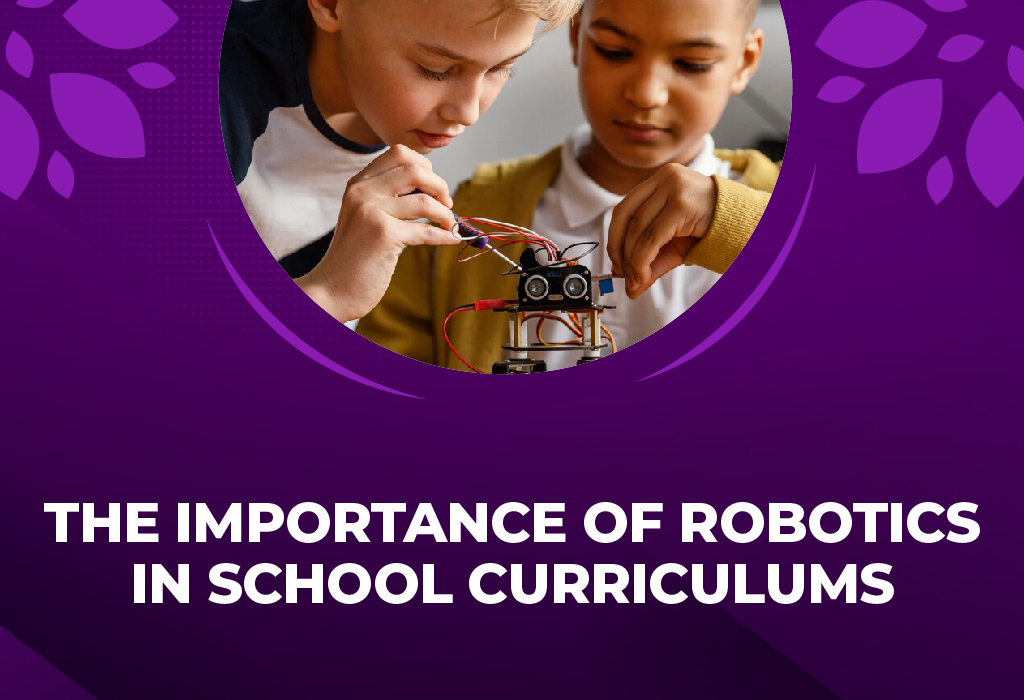The Importance of Robotics in School Curriculums

Introduction:
With the fast pace and rapid development of technology in the contemporary world today, one area that has really garnered so much interest so far is robotics.While we dive further into the 21st century, the relevance of robotics to education tends to be increasingly important.
Many schools nowadays include robotics in their curriculums; this trend is likely to continue for a while. But what’s the big deal with robots in school curriculums? Let’s dig into a few of the main reasons.
Problem Solving
First, robotics is a process of solving problems. It may either be through making a robot from scratch or programming one to do something. Students always think and solve problems critically. It applies in various other places-from science and engineering to other everyday challenges.
This challenge breaks down complex problems into manageable, smaller tasks. They will be able to think logically and step by step, trying to solve any issues there might be because things do not go as planned. These practical kinds of problem-solving enhance creativity and innovation.
Preparation for Future Careers
It will be shaped by robotics and artificial intelligence. There is a good future for the working world because the manufacturing, health sectors, and even entertainment use robots to make tasks more efficient, enhance innovation, and cut down on time waste. The introduction of robotics in school has made it easier to prepare students as engineers, scientists, and innovators of tomorrow.
Learning robotics also equips students with skills like coding, engineering design, and teamwork, which are in great demand in the job market today. According to reports, careers related to STEM will be on the rise in the coming years. A good base in robotics will help the students stand out when they get into the workforce.
Encouraging Teamwork and Collaboration
While robotics can sometimes be misconstrued as a solitary activity, it really is a fantastic tool for promoting teamwork. In many school robotics programs, students work in teams to design, build, and program robots. This encourages teamwork and communication because students have to share ideas, delegate tasks, and problem-solve together.
Group work also teaches them how to handle conflicts and adjust to different perspectives. Soft skills are no less than technical skills; they make students ready to lead a successful life in academic and professional life.
Making Learning Fun and Engaging
The biggest advantage is that learning becomes fun and interactive with robotics. School curriculums which contain math and science sometimes may not be as relevant because these are abstract subjects that hardly connect with real life; however, robotics ties them all to real-world applications.
When students see how mathematics, physics, and engineering are applied to the real world, they are going to be more enthusiastic about what they are learning. Robotics makes learning not a chore but a challenge. This sense of accomplishment, when students build or program a successful robot, can really boost confidence and motivate learning.
Encouraging Creativity and Innovation
Robotics is not about following instructions but has more to do with creating. When a child is challenged to build or program a robot, he becomes an extraordinary innovator. He begins brainstorming his ideas, testing what he has made, designing an improvement, and taking it toward specific goals.
A string of trial and error helps a student learn failure in school, which is an important need for developing a growth mindset. Robotics makes students think out of the box and pushes them to be creative about solving a problem. Such a mindset will help in whatever field they might pursue.
Digital Literacy
Being digitally literate is of extreme importance in this technological age. Robotics challenges students to work through computer programming, coding languages, sensors, motors, and a whole lot more. The more technical skills acquired, the better they will understand how to use technology and its digital tools, which goes hand-in-hand with another very important component of modern-day education.
Digital literacy would mean awareness of the underlying principles about which the technology works, more than how to use a computer. Robotics would offer first-hand experience in handling technology that could make the students very conscious of how the digital world works.
Building Confidence and Leadership Skills
This project, the robotics project, offers a leadership role to a student; sometimes, it involves the managing of a team and decisions which have an impact on the outcome of the project. All aspects of life provide learning opportunities for self-confidence and leadership skills.
The way it could be might either be presenting it before the class or being part of the robotics competition, whereby they get to know how to communicate, manage tasks, and make choices under pressure.
Inclusivity and Diversity
Given its nature as a new-age technology, robotics would also ensure that education experiences are commonplace for all regardless of the background. Many robotics programs make the field gender diverse, which is inclusive; there is an active effort to get girls and underrepresented groups to be part of STEM activities. In this regard, robotics creates a playing field for having an experience of education.
Conclusion
School curriculums will integrate robotics into learning: more than just teaching to assemble and program a robot to develop critical thinking, promote creativity, foster teamwork, and prepare students for a technologically-driven career. The very fact that robots will likely make tomorrow’s world may lead one to believe that the inclusion of robotics in education is inevitable because the true test lies in getting these students prepared for what is yet to come in this world tomorrow.

